[ad_1]
Everytime you carry your pet residence from surgical process, it’s common to have worries, questions, and points about learn the way to maintain them whereas they get properly. One aspect of post-operative care is protecting monitor of their stitches, so it helps to know exactly what you will need to be in search of.
The subsequent is a fundamental info to the dos and don’ts of post-operative wound administration, along with the basics of day-to-day care, and when to call your vet.


Phases of Wound Therapeutic
Whether or not or not it’s an injury or a surgical scale back, the pores and pores and skin goes through the an identical basic ranges of therapeutic. How prolonged that therapeutic takes might be relying on numerous components, along with:
- The size of the wound
- The type of the wound
- The depth of the wound
- The position of the wound
- The cleanliness of the wound
- Disruption to wound therapeutic
- The properly being of the particular person
For example:
| Cat Castration Wound | Canine Chunk Wound over Knee |
|
|
| Wound heals in 3-7 days | Wound heals in 7-21 days (or additional) |
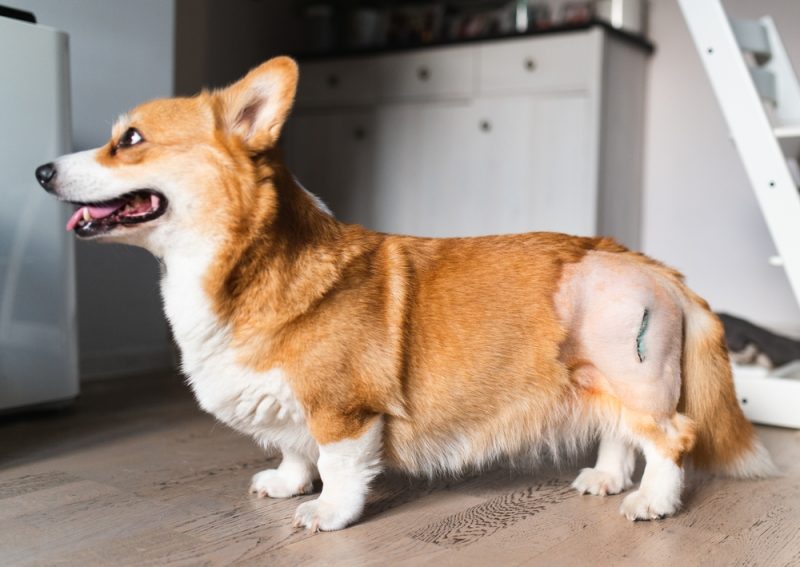

Whatever the form of wound we’re dealing with, all full-thickness pores and pores and skin wounds endure the following three ranges of therapeutic:
1. Irritation
Blood vessels initially constrict to control bleeding, nonetheless then dilate to allow white blood cells (eg. neutrophils, macrophages) to migrate to the realm to deal with any micro organism, damaged tissue, or contamination—that’s when wounds grow to be swollen and contaminated. If there could also be a lot of micro organism or contamination, additional white cells are recruited, resulting in pus. In clear, sterile surgical wounds, this part must be minimal.
2. Proliferation
In a healthful wound, fibroblasts (the cells involved in forming connective tissues) and capillaries (tiny blood vessels) come into the realm to form a scaffold for various cells to develop over and fill in any missing or damaged tissues. The proliferation stage can take as little as 48 hours in a surgically closed incision. In wounds which might be left open, the scaffold, known as granulation tissue, should fill the wound sooner than new pores and pores and skin cells (epithelial cells) can develop extreme.
3. Reworking
Scar formation: new collagen fibers are laid down alongside strains of rigidity to supply vitality to the newly long-established pores and pores and skin. In huge wounds, this course of can take as a lot as 2 years, and the scar tissue will always be slightly bit weaker than the distinctive pores and pores and skin.


Fully totally different Types of Wound Closure
Counting on the form of surgical process, wound location, incision measurement, and the surgeon’s selection, your canine might go residence with nylon pores and pores and skin sutures, intradermal pores and pores and skin sutures (dissolvable sutures all through the pores and pores and skin layer instead of on the floor of the pores and pores and skin), pores and pores and skin staples, and even tissue glue.
The form of wound closure shouldn’t have a significant impression on how the wound heals, nonetheless some canine might be additional delicate to certain suture provides. Essential issue is to keep up an in depth eye on the wound and get in contact along with your vet in case you uncover one thing that doesn’t look correct.
💛 🐶 Converse To a Vet On-line From the Comfort of Your Couch!
When you’ll need to converse with a vet nonetheless can’t get to 1, head over to PangoVet. It’s an web service the place you’ll communicate to a vet on-line and get the personalised suggestion you need in your pet — all at a reasonable value!
Execs and Cons of Sustaining Wounds Coated
You may want assumed that each one wounds might be lined after surgical process, nonetheless that’s not always the case. For starters, it’s not always easy to make use of a dressing or bandage to certain components of your canine’s physique, and usually, we want to have the power to see the wound frequently. Listed under are some execs and cons of masking a wound:
Execs
- Security in opposition to contamination
- Security in opposition to abrasion
- Added layer of security from scratching or licking
Cons
- We couldn’t immediately uncover bleeding/swelling/redness
- Wound coverings/bandages can lead to pyoderma
- Canine are typically additional bothered by a wound dressing than by the wound itself
How To Study Your Canine’s Wound
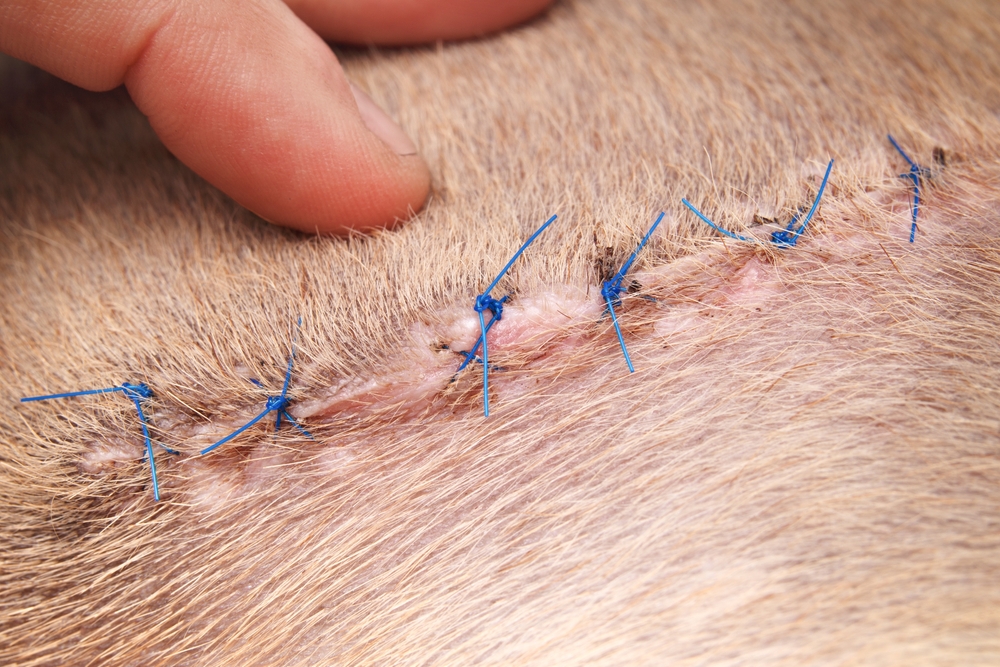

Your vet will go over the entire points you will need to do to help your canine get properly from their surgical process, as each case might be completely totally different, counting on the particular person pet and the form of surgical process they’ve had. Some canine will go residence with a dressing or bandage over the wound, whereas others might be left open. Counting on the state of affairs of the surgical wound, your canine is also required to placed on a surgical swimsuit or e-collar. You have to to depart this in place, notably in a single day or if you find yourself out, as a canine can do a LOT of harm to a wound in a extremely fast interval when left unsupervised. When you’re struggling to keep up a collar or swimsuit in your pet, communicate to your vet about some alternate choices. You might even want to fashion a personalized collar at residence!
Let’s talk about what a transparent, surgical wound ought to seem like at completely totally different ranges of therapeutic, and what you will need to be searching (BOLO) for.
Day 1-3: Irritation
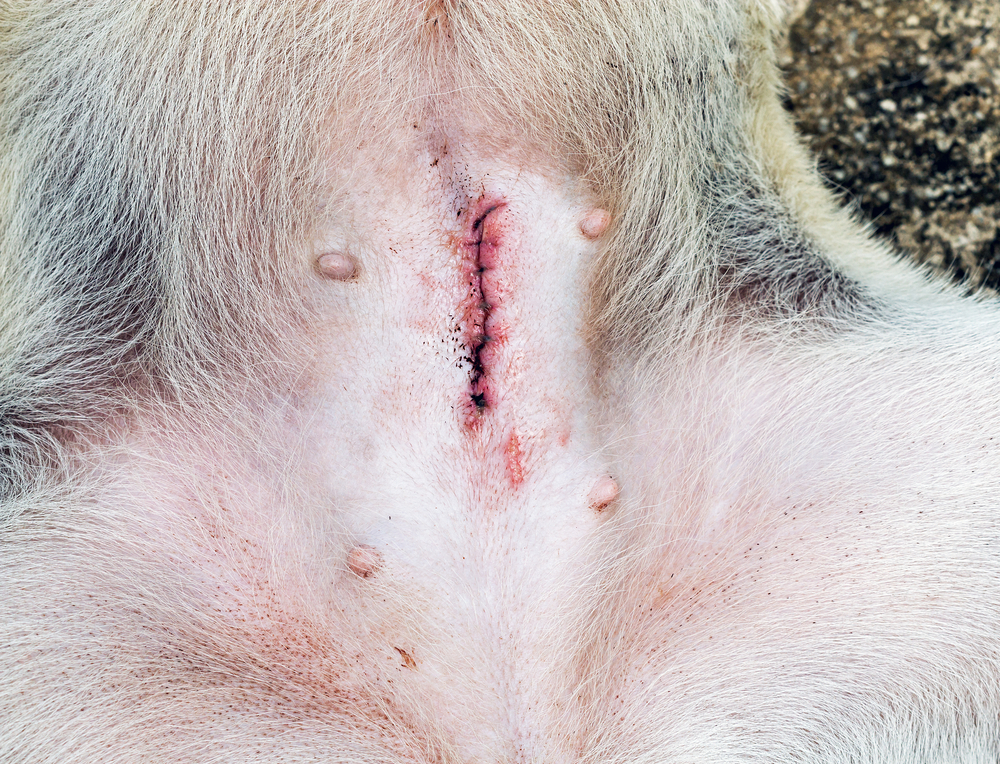

In the middle of the primary few days, it is pretty common for the edges of the wound to look a bit pink and contaminated.
BOLO:
- Swelling – the sutures (stitches) shouldn’t be digging into the pores and pores and skin
- Ache – the wound is also tender, nonetheless shouldn’t be excessively painful
- Discharge – there is also a small amount of blood-tinged fluid from the wound, nonetheless there should not be rather a lot current blood or pus
Day 4-7: Proliferation
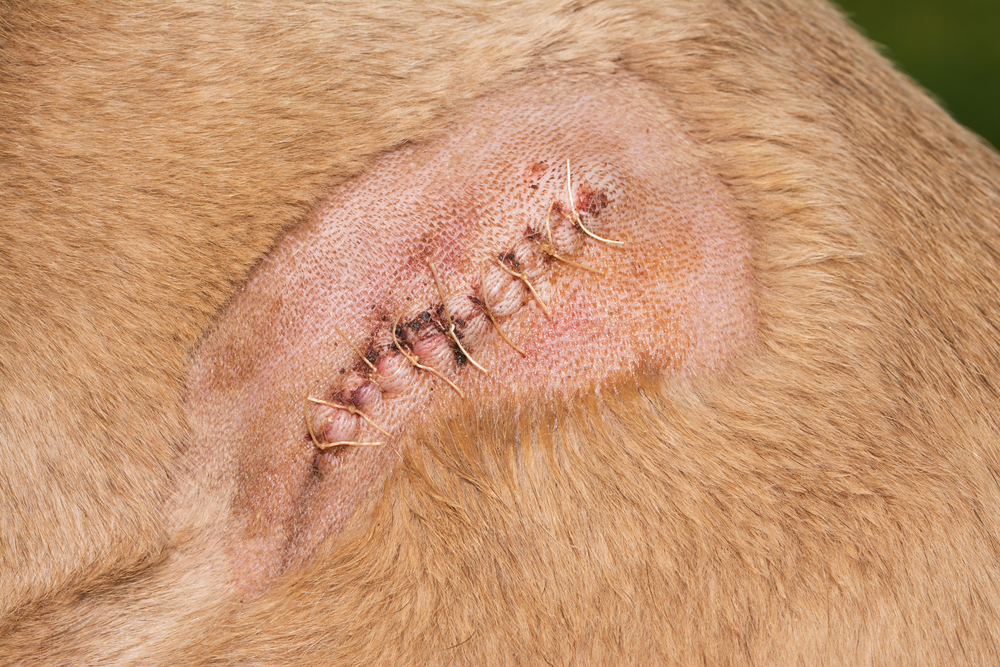

That’s when your canine might uncover the wound itchy or irritating, as energetic therapeutic begins, and shaved hair begins to develop once more.
BOLO:
- Licking, scratching, chewing
- Wound or sutures pulling apart
- Huge swellings alongside the incision line
Day 7 → : Reworking
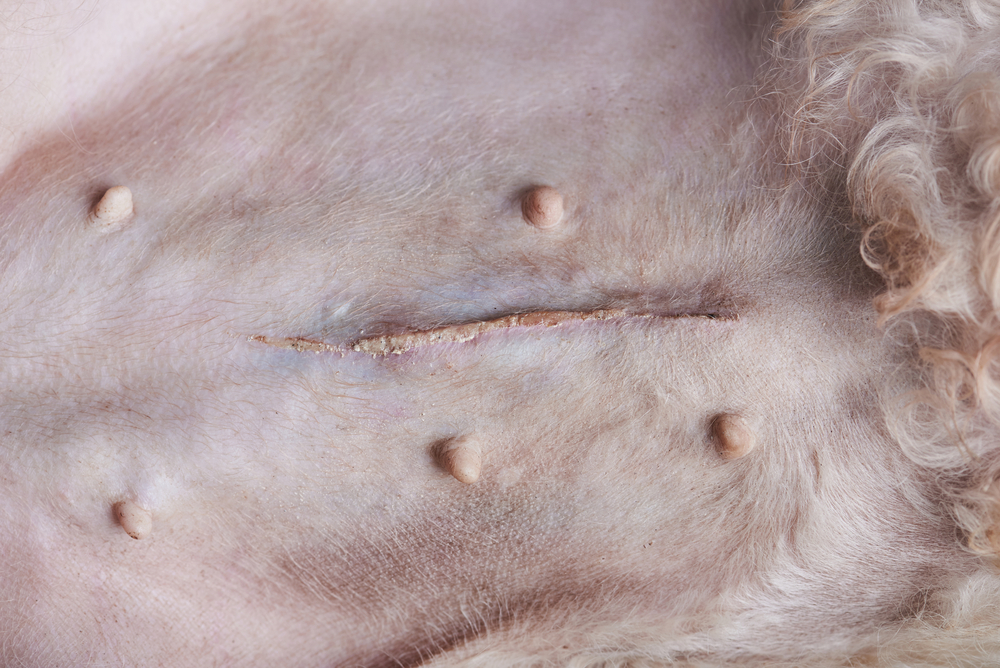

That’s the stage the place the sutures aren’t wished, although we regularly depart them in for a further 5-7 days to be safe. You should be succesful to place gentle stress on the wound with none discomfort, and the incision must be knitted collectively.


Frequent Surgical Wound Issues
Wound Breakdown
Additionally known as wound dehiscence, that’s the partial or complete failure of wound closure. It might happen for lots of causes, just like an an infection, failure of sutures, or an extreme quantity of working spherical. The treatment will rely upon the place the dehiscence has occurred, how huge it is, and what stage of therapeutic the wound is at.
Internal wound dehiscence will just about positively require surgical process, whereas a breakdown of the pores and pores and skin incision might be dealt with with a dressing, pores and pores and skin staple, or by completely re-closing the wound.
Seroma
A regular complication of surgical process, notably on abdomen wounds or the place a giant mass or tumor has been eradicated. A seroma is a gaggle of inflammatory fluid that has rushed to the incision web site to help heal the wound. Normally, leisure and anti-inflammatory medication will see the seroma resolve by itself, nonetheless they generally must be drained.
An an infection
Publish-operative infections aren’t as frequent as you might anticipate, given that canine won’t be basically most likely probably the most fastidiously away from creatures! Nonetheless, they do happen and must be dealt with quickly. In case your canine’s wound is purple, warmth, or swollen, or if there is a pink, yellow, or creamy discharge, identify your vet instantly.
Suture Reactions
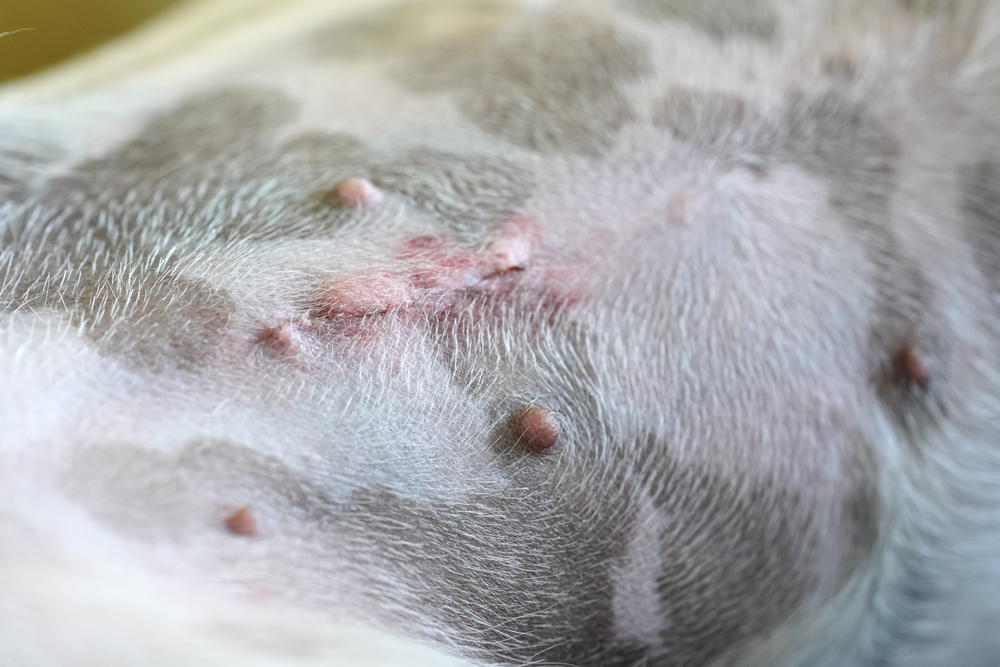

Suture supplies has come a long way since catgut was the mainstay of wound closure. Even so, some individuals might be additional delicate to suture supplies, which can find yourself in irritation throughout the incision and lumps/bumps forming alongside the suture line, which might be pretty mild or excessive. This usually occurs in the middle of the proliferation stage of therapeutic. Always take a look at alongside along with your vet in case you’re nervous about any swelling in your canine’s wound, nonetheless it is common for small, painless bumps to look whereas the incision is therapeutic.


Often Requested Questions
Must I Clear The Wound?
Besides significantly directed to by your vet, you shouldn’t should clear your canine’s surgical incision. A small amount of crusted blood or scabbing is common, and it is increased to go away these in place fairly than hazard contaminating the wound or disrupting therapeutic by attempting to decide on them off.
In case your canine’s wound turns into dirty, the perfect issue to do is dip some cotton wool in sterile saline or cooled boiled water (no need for it to be salty), squeeze out additional water, and gently dab the pores and pores and skin throughout the wound. Stay away from touching the incision itself.
Have in mind, your canine might be pretty tender, so it’s a superb suggestion to technique the wound slowly, using just a few ‘warmth up’ objects of cotton wool to work your method nearer to the wound, sooner than using a current piece to wash throughout the incision.
How Normally Do I Need To Go Once more For A Study-up?
It can very rather a lot rely upon the age and properly being of your canine, and the form of surgical process they’ve had. For routine procedures like a spay or castration, most vets will counsel a post-op take a look at after 3 and 7 days, with sutures being eradicated after 14, nonetheless every vet and observe is completely totally different.
Most importantly, in case you’re nervous about your canine’s wound or one other aspect of your canine’s restoration, don’t wait in your subsequent appointment; contact your vet instantly. In case your vet is unavailable, there are always on-line veterinary firms that will assist you.
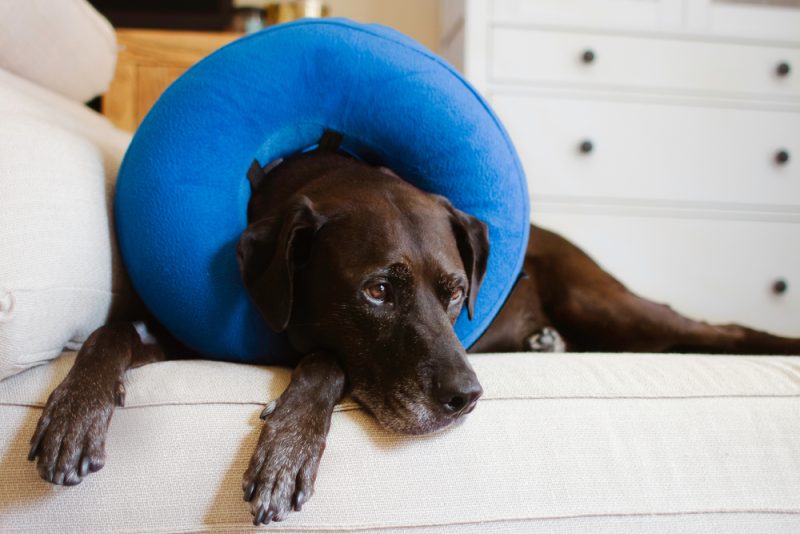

How Prolonged Does It Take For Dissolvable Sutures To Dissolve?
Fully totally different suture supplies kinds are designed to final greater than others, counting on the job they’re doing, and so they’re designed to have a minimal time period sooner than they start to interrupt down. For example, suture provides utilized in stitching up intestines will start to interrupt down after just a few weeks, as a result of the tissue heals quickly, and we don’t want suture supplies to set off a problem. Throughout the deepest muscular layer of the abdomen, the suture supplies used acquired’t start to interrupt down for on the very least 4-6 weeks, whereas the material utilized in intradermal sutures breaks down after 2-3 weeks. Nonetheless, how prolonged some suture supplies lasts can vary, and it isn’t uncommon to nonetheless actually really feel suture supplies throughout the deepest layer of a spay scar many months after the surgical process!
Must I Cowl The Wound With Ointment?
Certainly not put any ointments, gels, or lotions on a surgical incision till significantly instructed to by your vet. Most pores and pores and skin preparations for individuals won’t be acceptable for canine pores and pores and skin and might do additional harm than good.


Remaining Concepts
Hopefully, you are feeling additional prepared than ever to observe your canine after surgical process. Normally, most likely probably the most tough part of a canine’s surgical restoration is attempting to stop them from working spherical inside a day or two! This may be very important to utilize any collars or suits to cease your canine from licking or scratching their wound, even once they’re not a fan of their new fashion accent. It’s a lot better to have a canine that resents their surgical collar than one that ought to have one different surgical process.
Your vet would always favor to have a look at your canine and even check out {a photograph} than have you ever ever worrying about your canine’s wound and by no means getting involved, so don’t hesitate to call them in case you’re the least bit nervous.
Featured Image Credit score rating: DyziO, Shutterstock
[ad_2]
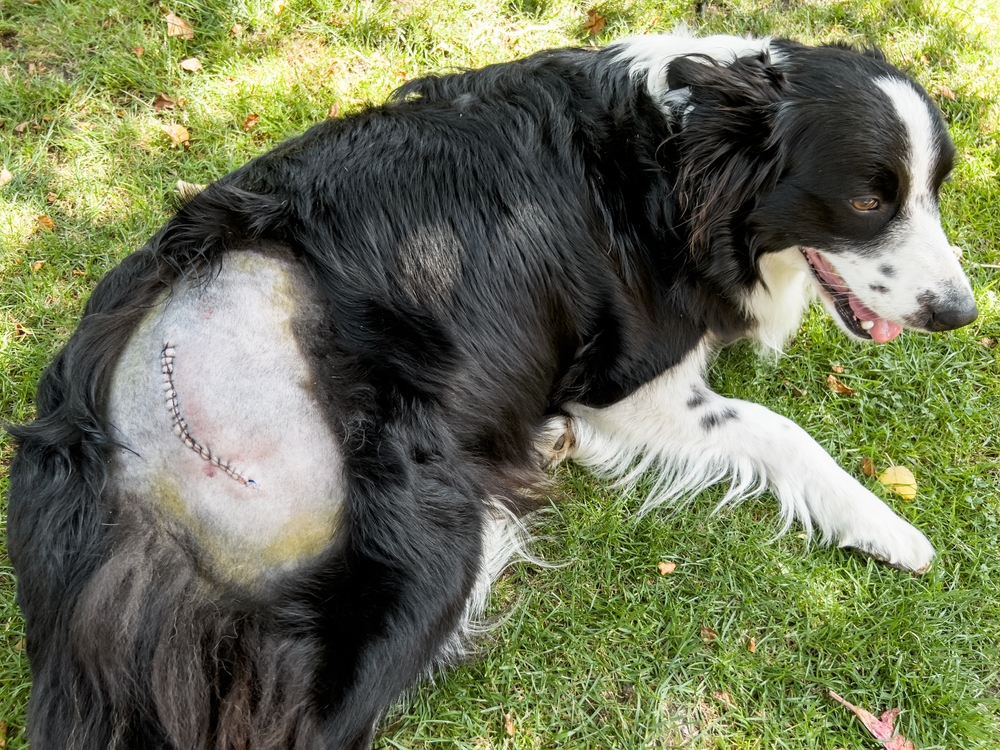
The explanations about different types of wound closures were informative. It’s good to know what options are available and that some materials may cause sensitivities. This knowledge will help in discussions with my vet.
I appreciate how this piece emphasizes communication with veterinarians regarding concerns during recovery. It reassures pet owners that seeking help is important, which is something we should all prioritize when caring for our pets.
Overall, this article is very well-structured and easy to follow. The detailed information about potential complications like infections or seromas is especially valuable for anyone dealing with a pet’s recovery after surgery.
This article provides a comprehensive overview of post-operative care for pets. I appreciate the clear breakdown of the healing stages and the pros and cons of covering wounds. It’s essential information for pet owners.
I found the section on how to check my dog’s wound particularly helpful. Understanding what to look for during recovery is crucial, and I feel more prepared now to monitor my pet’s healing process.